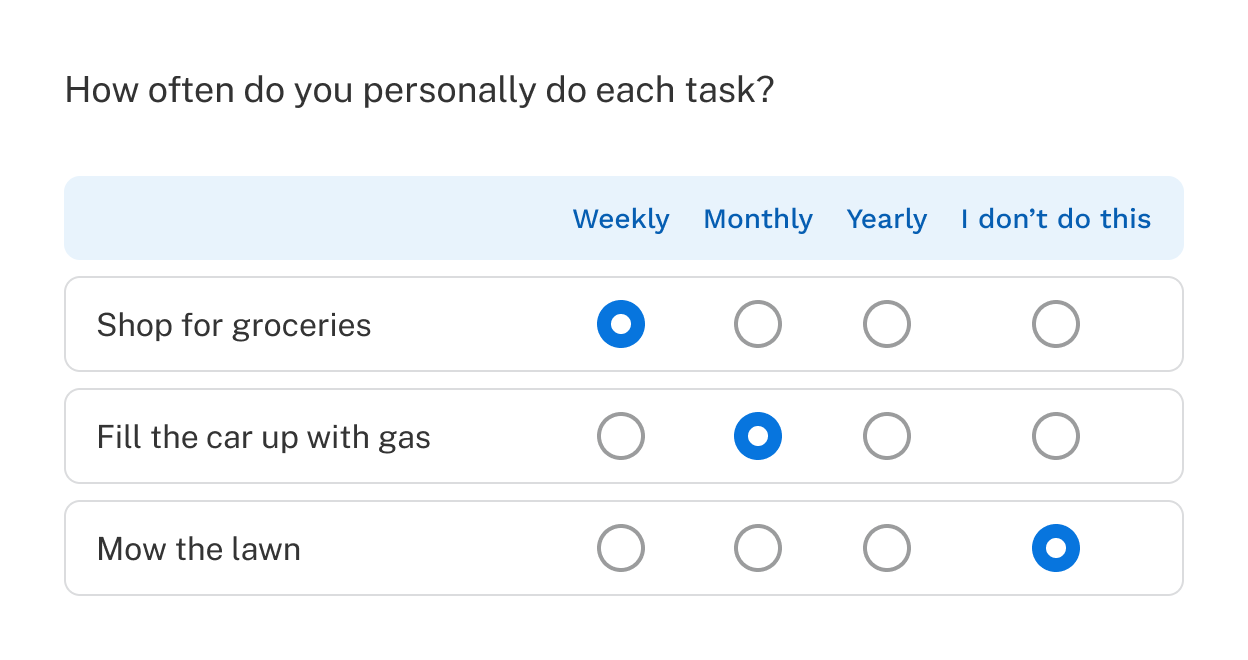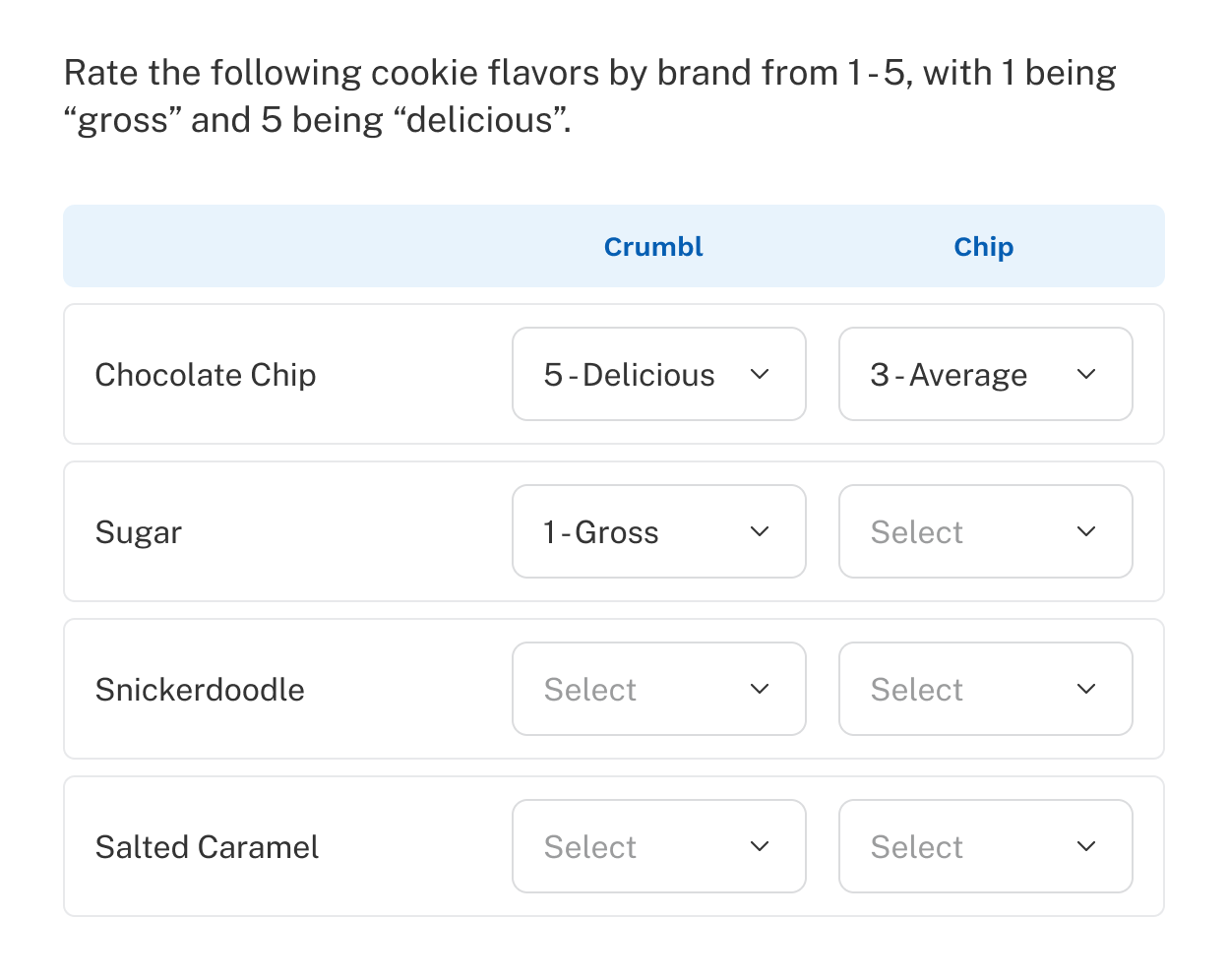Introduction
Grid questions allow you to ask a series of questions in a table format. A common use for a grid question is to rate a list of items on the same scale, such as in this example:

Grid questions allow you to ask a series of questions in a table format. A common use for a grid question is to rate a list of items on the same scale, such as in this example:

Discover has several grid options. Each type has its own special settings.
Set min/max selections per row
Designate the number of boxes (e.g., min and max checks) a respondent must check in each row. For instance, you might want to ask, “Please select two words that best describes various aspects of our brand.” To do this, you would enable the range settings and define both the minimum and maximum number of checkboxes per row, setting each field to two.
If the question is optional but the range settings are activated, respondents must comply with the specified range (number of checkboxes) if they decide to respond. In the provided example, even if the question isn't required, if a respondent chooses one option in a row, they must either add another selection to fulfill the requirement of two choices or deselect all options to proceed to the next question. Completing additional rows is optional unless a selection is made in those rows.
Set number range
Specify a valid numeric range for respondents to input.
If the question is optional and range settings are applied, respondents who opt to answer must adhere to the specified range. This means that if a respondent provides a value, it must fall within the defined range for them to proceed to the next question.
Allow decimals
Allow greater precision by allowing respondents to enter decimal values.
When the setting is turned on, an input box is shown. When left blank, respondents can enter decimals and the limit is not defined. Add a value greater than zero to limit the allowed places. Because the value sets a maximum number, any number of decimals up to and including the value are allowed.
Left and right input labels
Include a label to the left or right of each input box. For example, you can include a “$” sign in the left-of-input label box for questions related to currency.
Bipolar grid, also known as semantic differential, resembles a single select grid but includes additional row labels positioned to the right of the radio buttons. This type of grid allows respondents to tell us where they fall on a scale between two polar adjectives such as fair/unfair or luxury/necessity.
Left and right labels are always linked together. This ensures when settings like randomize rows are applied, that the two opposites will appear next to each other.
Dynamic lists can only be used to define the left labels. This ensures that there will always be the same number of rows and that the bipolar opposites are connected.
Randomize all left and right labels
If enabled, randomly show the question as-is (left labels on the left, right labels on the right) or switch the right and left label columns (left labels on the right, right labels on the left). Columns labels and radio buttons will also swap to follow the labels.

In addition to the rows and columns lists, dropdown grids require a third list that defines shared values which appear in the array of grid cells.
By default, when a question is added, it is marked as required. If you want to allow respondents to skip the question, toggle off this setting.
When this setting is toggled on for rows or columns, all items in the respective list will be randomized.
Use the following settings to customize the size of your grid on desktop. These settings do not apply to mobile, which uses a separate, optimized layout.
Controls the total width of the grid (not including the question text). By default, it matches the standard question container width. Setting a value below 888px will shrink the grid within that container. The grid will scroll horizontally if the grid's contents (like wide row labels, fixed column widths, or number of columns) need more space than the grid width allows. You can also set a larger value to expand the grid beyond the default container.
Controls the width of the columns. By default, columns auto-size based on their contents—short numeric labels create narrower columns, while longer text like Likert scales will create wider ones (up to 150px). If you set a fixed width, all columns will be uniformly sized to that value.
Controls how wide the row label column is.
The layout of the grid question adjusts dynamically based on the respondent's screen width. If the screen width is below 834 pixels (smaller than an iPad), the grid question will be split into multiple questions on the same page. This responsive design ensures better usability and readability for respondents across various devices